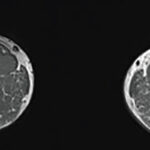Dr. Grayson goes on to explain, “Inflammatory cells concentrate in FDG, meaning that FDG-PET might be useful to assess the degree of inflammation present in a patient’s tissues in certain diseases.
“At the NIH,” he says, “we created a vascular imaging study in LVV. In this study, detailed clinical assessment is linked to advanced molecular imaging. This study includes the initial results from our cohort. Other groups have studied the role of FDG-PET to detect vascular inflammation in LVV, [but] almost all of these studies have been retrospective and focused on the time of initial diagnosis. In our study, we prospectively imaged patients with LVV over the course of disease at regular intervals. We also clinically evaluated all the patients the day prior to imaging so that we were blinded to the imaging results.”
The Details
The researchers performed 170 FDG-PET scans in 115 individuals. The 56 patients with LVV included those from the two major LVV categories: giant cell arteritis and Takayasu’s arteritis. The 59 controls were patients with hyperlipidemia, patients with diseases that mimic LVV and healthy people. All patients underwent a clinical evaluation; patients with LVV were imaged at six-month intervals. The team used a score based on global arterial FDG uptake, the PET Vascular Activity Score (PETVAS), to examine associations between activity on the PET scan and clinical characteristics and to predict relapse.
Dr. Grayson says, “FDG-PET was useful in differentiating patients with clinically active LVV from controls (a sensitivity of 85% and a specificity of 83%). However, we also observed that the majority of patients with LVV in clinical remission at the time of imaging had FDG-PET scan findings that looked like ongoing vasculitis.”
What does this tell us? “We rarely have histology to compare to the imaging studies,” says Dr. Grayson, “so we are always speculating about the source of FDG arterial uptake. Is it ongoing active inflammation, metabolic activity from damage/repair processes or secondary atherosclerosis? The results from our study provide indirect support to the idea that arterial FDG uptake during clinical remission is likely driven by a combination of these factors. We found that severe FDG uptake during remission predicted clinical relapse within an average of 15 months of follow up.”
What Helps? Who Gets Better?
“Our study was conducted within an observational cohort, which is prone to certain forms of bias,” Dr. Grayson says. “A great next step would be to incorporate imaging studies into randomized controlled trials in LVV to see how treatment modifies imaging signals in the arteries.



